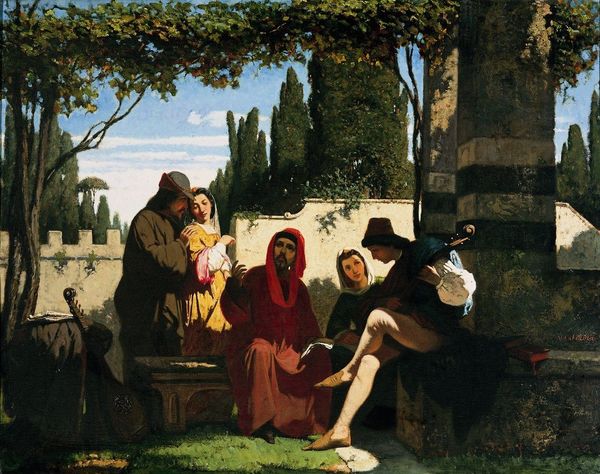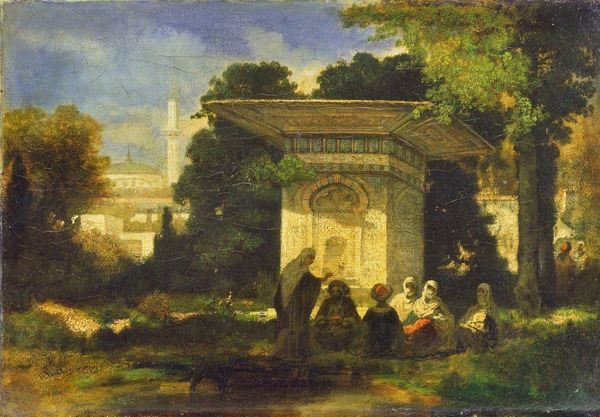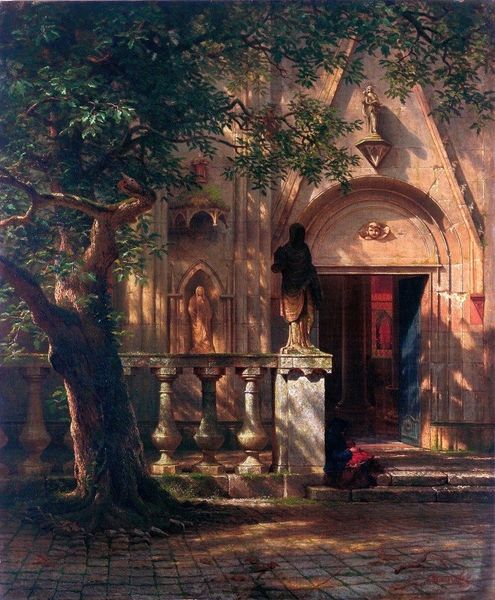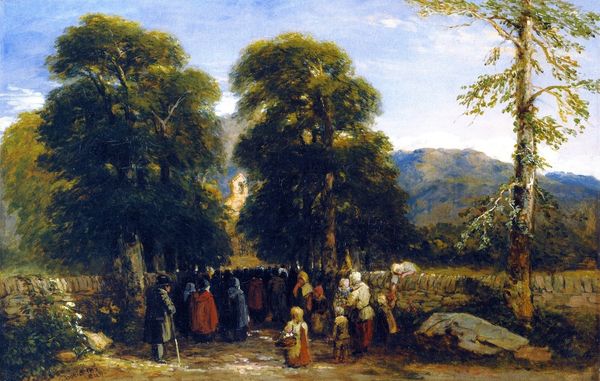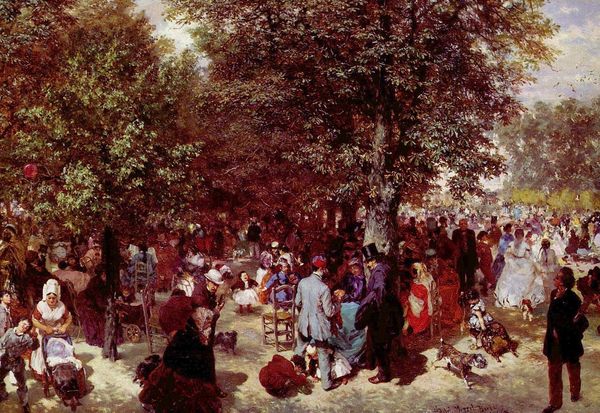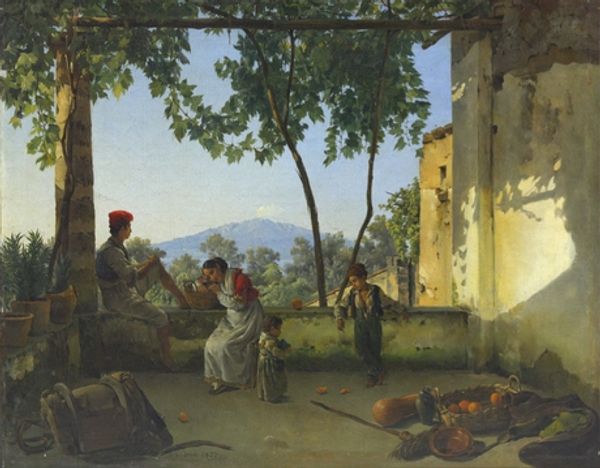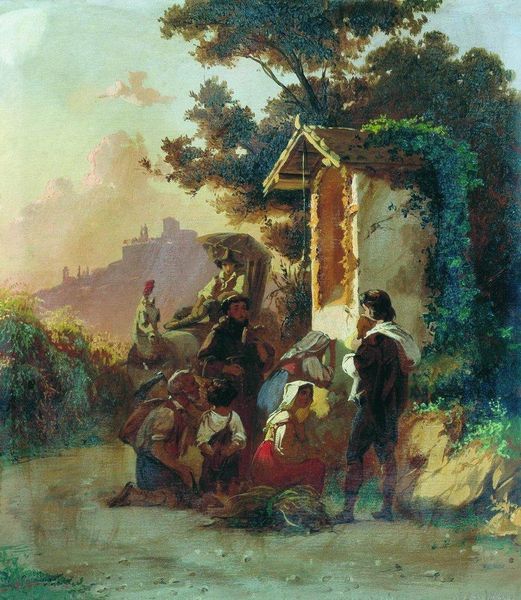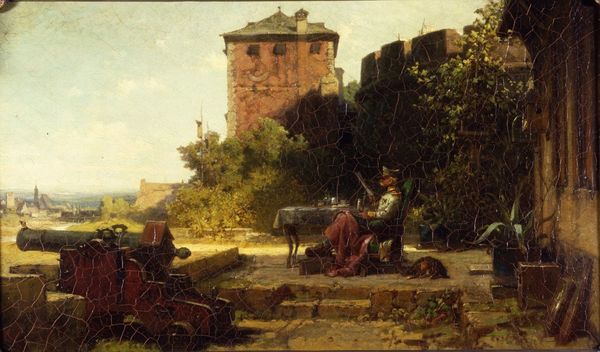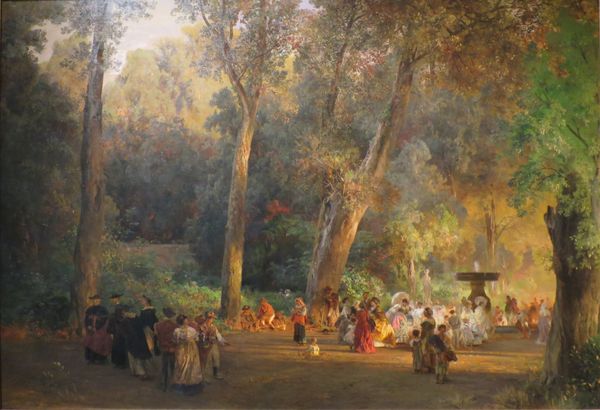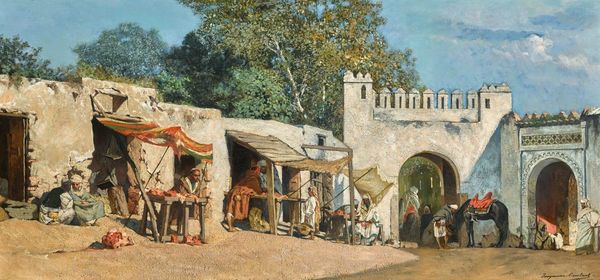
painting, oil-paint
#
gouache
#
painting
#
oil-paint
#
landscape
#
figuration
#
underpainting
#
orientalism
#
genre-painting
Dimensions: 73 x 59.5 cm
Copyright: Public domain
Curator: Standing before us is "Dervishes in Cairo," an oil on canvas completed in 1875 by Konstantin Egorovich Makovsky. It’s held at the Tretyakov Gallery in Moscow. What strikes you immediately? Editor: It evokes a feeling of both vibrant spectacle and cloistered stillness. The eye is drawn to the theatrical red robe of the central figure, yet the surrounding space, draped in shadows and dominated by that sprawling tree, seems to invite quiet contemplation. Curator: Absolutely. The red-robed figure is the focus, immediately triggering curiosity, while that enormous, ancient tree is also so powerfully symbolic. In many traditions, it can represent shelter, knowledge, and a connection between heaven and earth. Its gnarled branches seem to embrace and protect the gathering of Dervishes. What associations does this conjure for you? Editor: This image very much embodies the style we recognize as Orientalism – a European fascination, or perhaps imposition of an exotic identity on the Middle East and North Africa. It raises interesting questions for me about who this painting was for and what stories it was telling its original audience about this place and its people. Were Dervishes actually seen this way? Curator: Those are exactly the right questions to be asking, and such a lens reminds us of the politics of representation. Remember, though, that in seeking inspiration from other cultures, we shouldn't assume a unified or straightforward experience. The symbolic potential of the Sufi whirling ceremonies is incredibly diverse, often centered on accessing spiritual knowledge and unity through ecstatic movement. The painting could have aimed to reveal aspects of ritual, spiritual connection and practice in what were, in his time, perceived as very alien spaces. Editor: Right, and Makovsky was, himself, traveling through a quickly changing and volatile geo-political space – both expanding and contracting across empires. This context informs how he would represent people he observed and encountered, so it adds extra layers to consider. Curator: Indeed. Even the use of gouache, alongside the oil paint, may hint at both a commitment to realism and a willingness to embrace artistic license. There’s a certain flatness and vibrancy achieved here that's characteristic of gouache. Editor: Looking closely, I wonder, what does the relative comfort or discomfort the painting invokes tell us about us now? That, ultimately, might be its most profound symbolic contribution. Curator: A worthy final thought, indeed. Makovsky's "Dervishes in Cairo" encourages reflection, not just on its subject matter but on the gaze through which we see it.
Comments
No comments
Be the first to comment and join the conversation on the ultimate creative platform.

